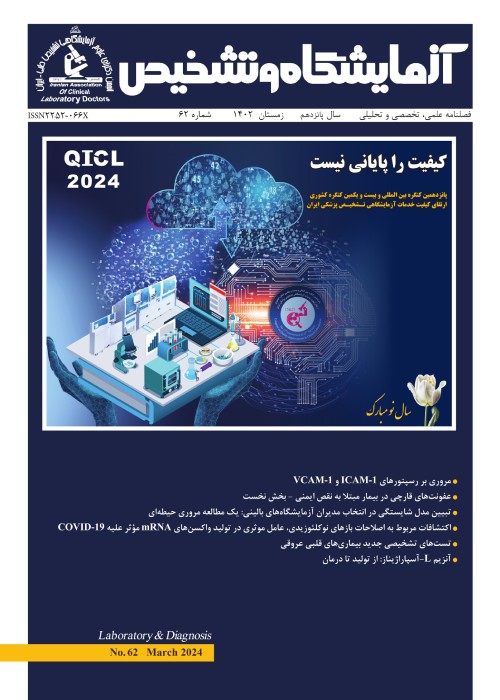Study ofrs157580 and rs8106922 of TOMM40 gene in patients with late onset Alzheimer's disease
Alzheimerchr(chr('39')39chr('39'))s disease is the most common type of dementia or "dementia" in old age. Its incidence increases with age and is associated with brain atrophy and nerve damage, especially in the hippocampus and the base of the forehead. Alzheimerchr(chr('39')39chr('39'))s disease is classified into two types based on its onset age: early (less than 65 years) and late (over 65 years).
Alzheimerchr(chr('39')39chr('39'))s is a multifactorial disease in which genetic and environmental factors play a role in its population distribution. Genetic background, age and gender are the main factors in the development and spread of the disease. Some mutations in the APOE gene have been shown to increase susceptibility to Alzheimerchr(chr('39')39chr('39'))s disease in different populations. The TOMM40 gene is located in chromosomal region 13.q 19, which is about 15 KB away from the APOE gene. In this study, the genetic polymorphisms rs157580 and rs 8106922 in TOMM40 were investigated with a risk of late-onset Alzheimerchr(chr('39')39chr('39'))s disease.
In this case-control study, DNA was extracted from the peripheral blood of 117 patients and 130 controls using desalination method / K protonase and several genetic formations of rs15758080 and rs 8106922 TOMM40 genes using ARMS-PCR And sequencing.
In rs157580, the frequency of GA genotype was statistically significant in the two groups of patients and healthy and based on the results, it has a possible protective role (P=0.027). He did not have a gallows.
Also, for rs 8106922, the frequency of AG genotype in the two groups of patients and healthy had a statistically significant difference (p=0.002) and it can be considered as a possible risk factor.
On the other hand, GG genotype had a statistically significant difference between the patient and healthy groups (P=0.002) and can be considered as a possible protective action. The allele frequency for allele A in the patient and healthy group had a statistically significant difference (P=0.003) and can be considered as a possible risk factor. The allele frequency for G allele in the patient and healthy group had a statistically significant difference (P=0.003) and can be considered as a possible protective factor.
Based on the results of this study, TOMM40 gene can be considered as one of the possible genes associated with Alzheimerchr(chr('39')39chr('39'))s disease. Further studies of other genes involved in disease development, as well as functional studies of this gene at the cellular and molecular level are recommended.
- حق عضویت دریافتی صرف حمایت از نشریات عضو و نگهداری، تکمیل و توسعه مگیران میشود.
- پرداخت حق اشتراک و دانلود مقالات اجازه بازنشر آن در سایر رسانههای چاپی و دیجیتال را به کاربر نمیدهد.


